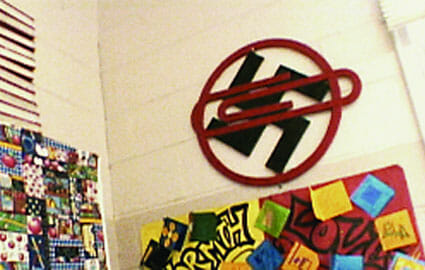
With no Jews, no Catholics, one Hispanic and five African-Americans, the Protestant town of Whitwell, Tenn. (pop: 1,600) isn’t exactly renowned for its diversity. In fact, as a Southern enclave located uncomfortably close to the birthplace of the Ku Klux Klan and the 1925 Scopes Monkey Trial, Whitwell regularly faces biases of its own. So when a group of middle-school students chose to study the Holocaust, it was with a definite sense of their limitations. In an attempt to comprehend the incomprehensible, the students decided to collect six million paper clips —one for every person murdered—as a visual symbol of what happened during WWII. They chose paper clips because they were practical and because they had been worn by Norwegians during the war as a sign of silent protest.
With the help of two German journalists whose contacts led to crucial national publicity for the project, the paper clips began to pour in from around the world. Just weeks after a Washington Post article and a segment on World News Tonight, the students had received 24 million paper clips in some 25,000 pieces of mail, each attached to a story.
Ultimately, almost 30 million would amass in Whitwell. But it’s what happened to the town that’s so remarkable. One of the two teachers spearheading the project described the letters, which were painstakingly documented and filed, as “an ice water bath.” A self-avowed racist, he spoke of the dramatic change of heart he had undergone as a result of the collaboration. He didn’t want Southern children stereotyped as “stupid rednecks,” yet he had done that toward others. Other residents spoke of their eye-opening experience as well, forming a chorus of transformed lives. Holocaust survivors, their families and the families of victims all came to Whitwell to share their stories. They spoke from the cross-adorned pulpit of a church, as Germans and Americans, young and old all wept as one, finding hope and healing together.
Filmed over several years, with scenes from Spielberg’s recollections of Holocaust survivors, this riveting documentary is filled with repentance, joy and promise. It could use some editing and, as dawn crept over the hills and the music swelled during the film’s opening sequence, I feared the worst. But within minutes, I was in tears that continued unabated, unashamedly, for the next 90 minutes. I was not alone.
The paper clips found a home in a renovated railcar that had been used to transport Jews to the camps. Today, it serves as a living memorial to tourists and children who come to listen and learn from the students of Whitwell Middle School.
Who would have thought we needed another movie about the Holocaust? We did, though. Perhaps we also needed one about the South—the ever-maligned, race-conscious, Christ-haunted South that, at least in this version, is on a path to change the world, one paper clip at a time.